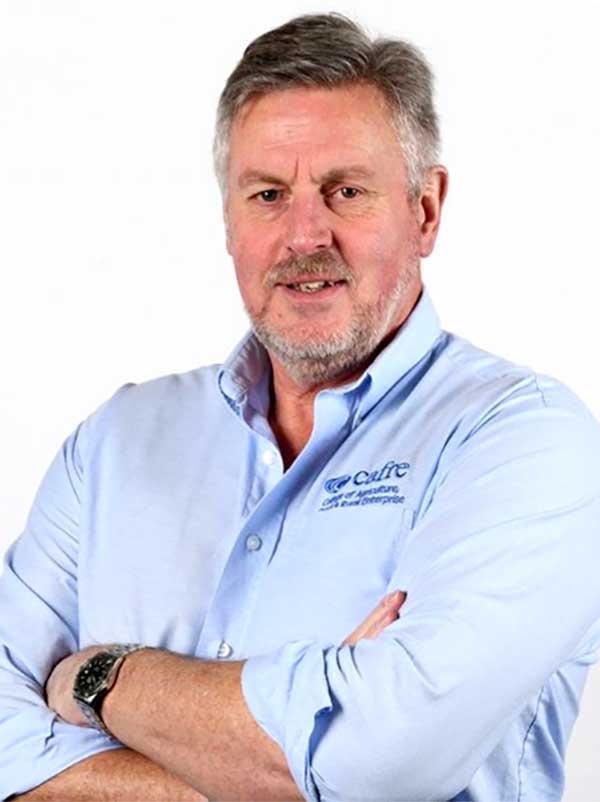Taking positive steps in uncertain times in dairying
Feed, fertiliser and fuel prices, as a result of the war in Ukraine and global supply issues, are at levels almost inconceivable a mere 12 months ago writes Alan Agnew, Senior Dairy Development with CAFRE.
Inflation is raising all input costs and the economy is about to enter a period of recession.
Fortunately, milk price has also increased to cover current costs, but can this be maintained in the longer term? Alongside this the farming industry is facing a raft of new environmental policy and regulations in response to climate change and emissions’ legislation.
Alan Agnew, Senior Dairying Development Adviser with College of Agriculture, Food and Rural Enterprise (CAFRE) said: “Dairy producers would ideally prefer clear and simple market signals in a stable business and policy environment when making plans and undertaking farm developments.
“Unfortunately, this is not the case at present, but we can still identify some key drivers that will enhance a dairy business regardless of what the future may hold. And there are steps that can be taken over the next weeks and months that will bring long-term gains.

“Improving technical efficiency improves both economic and environmental sustainability. Feed efficiency is critical so getting all winter forages analysed and preparing a feed plan will help optimise concentrate use. Good transition cow management is the foundation for not only feed efficiency but also cow health in early lactation.”
Alan added: “Condition scoring cows now in late lactation and adjusting concentrates to achieve a target condition score of 2.75 – 3.0 at drying off is just one example of the small steps farmers can take to improve profitability and have environmental benefits.”
He said that farm nutrient management should also be a priority going forward. Autumn generally provides an ideal opportunity to apply lime to grassland. Improving soil pH from 5.5 to the target of 6.5 on mineral soils can improve fertiliser utilization by more than 20% in the following years. At current fertiliser prices this represents a saving of over £70/ha/year.
“Lime is the cheapest fertiliser you can buy and lifting soil samples in December or January is the best walk you’ll take all year. Producers also should be thinking carefully about the need for final dressings of fertiliser that are normally applied in early September,” he said.
“The response in terms of grass growth may well be less than the 10kg grass dry matter/kg fertiliser N that is cost effective. Only if there is a real need for the grass in October/November should you be applying fertiliser nitrogen. Better that the focus is on use of slurry and manures to address P and K needs of soils”.
Breeding decisions are also being made now as bulls/semen for this season are selected. PTA’s (Predicted Transmitting Abilities) for new management traits are available within the catalogues that will enable producers to fine tune their selection based on feed efficiency, maintenance requirement and environmental sustainability.

Alan added: “A move towards smaller cows with less maintenance requirement and greater survivability in the herd, while maintaining production should be the target. For some there may even be the option to cross breed provided it is undertaken in a properly programmed manner.”
Capital investment decisions in the past have often favoured expansion rather than efficiency. Now, until the environmental frameworks for agriculture emerge, it may be prudent that efficiency should be the priority. Items that promote labour saving/efficiency can reduce the need for employed labour and/or reduce the time spent by the farmer in menial tasks and increase the time available to manage.
For example, robotic scrapers, auto-drafting facilities at the parlour exit, or optimum sizing of the milking parlour can reduce labour input. Items such as heat detection and feed to yield systems can also deliver additional data and precision to the business.
Energy efficiency is also a high priority for investment eg LED lighting systems, heat exchangers, variable speed pumps, and plate-cooler systems.
Regardless of the many challenges and uncertainties facing producers at the moment there are still many small decisions that can be made which can have significant benefit going forward. Advice is available from your local CAFRE dairying development adviser.
Alan said: “Best to remember, that when you’re up to your neck in the mire it’s advisable to keep your head up.”

























